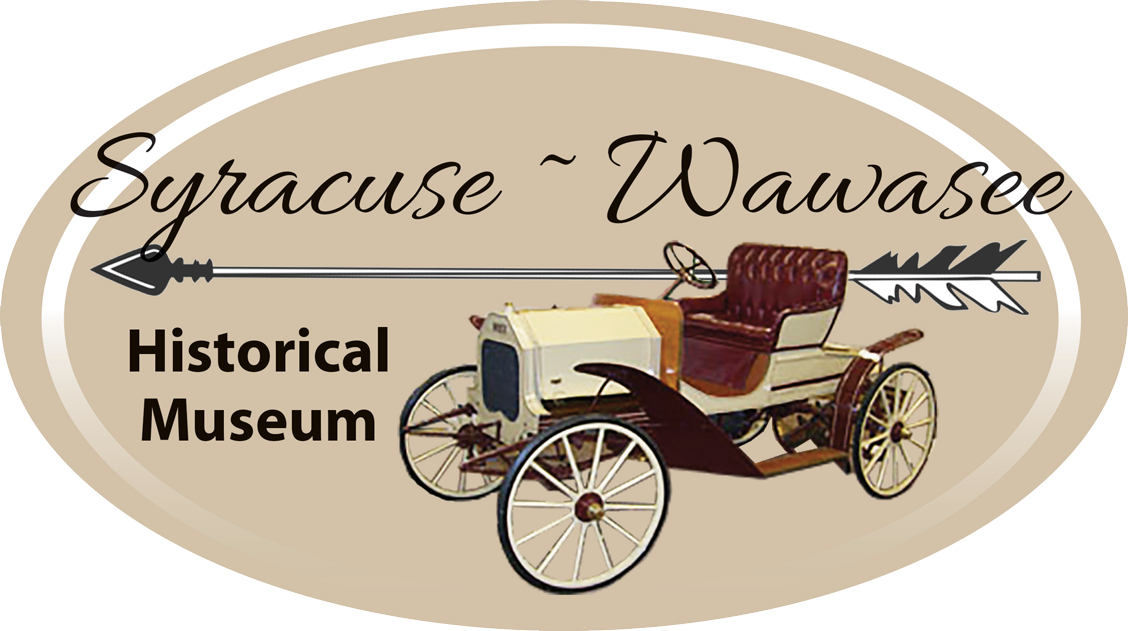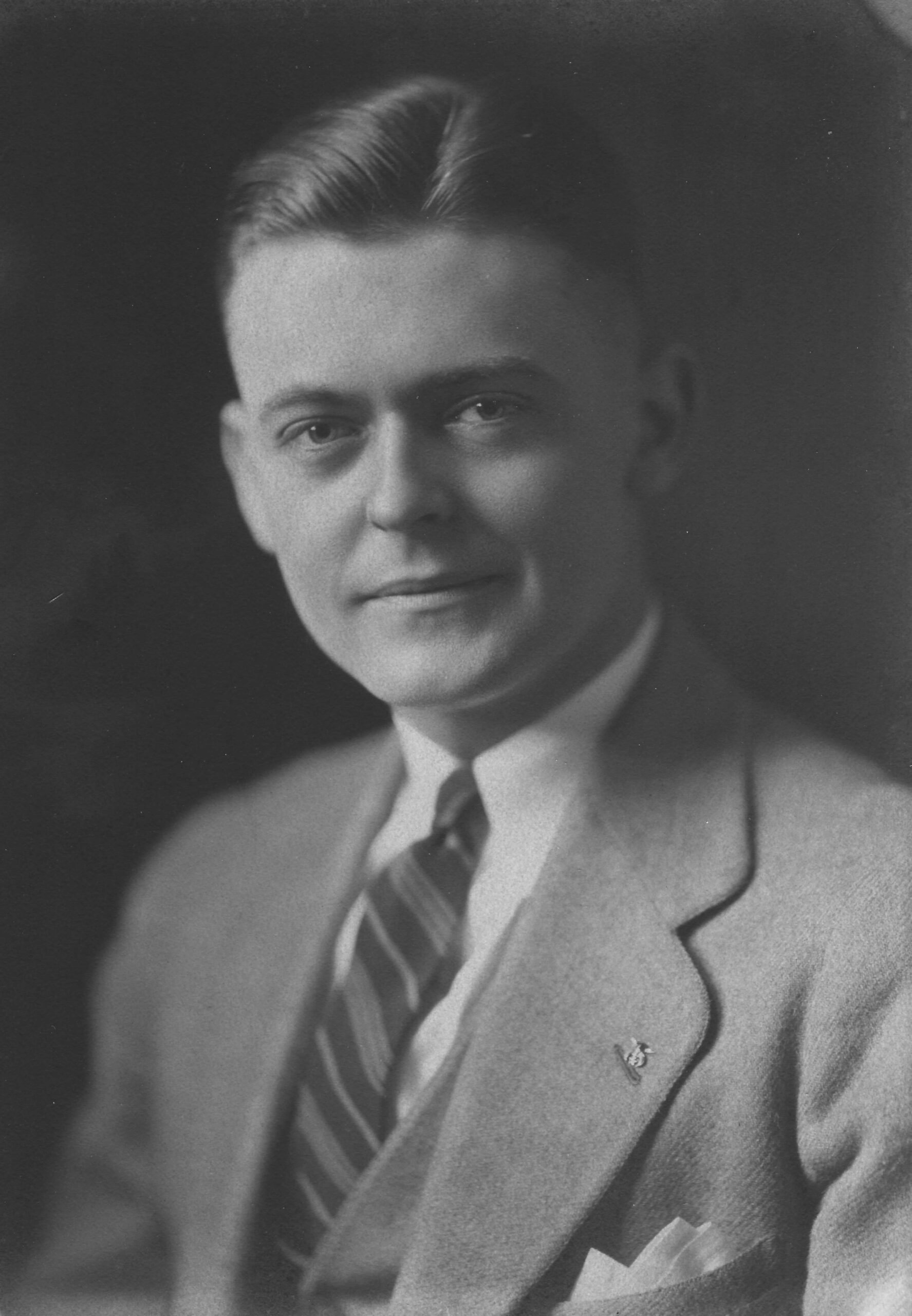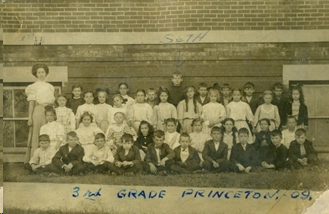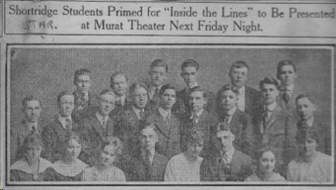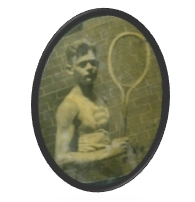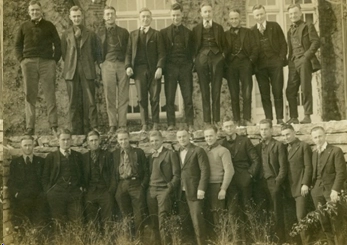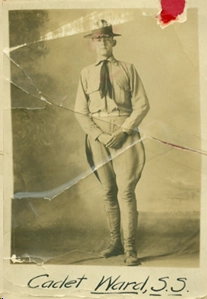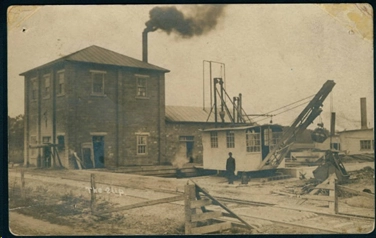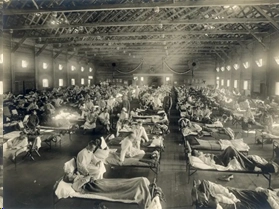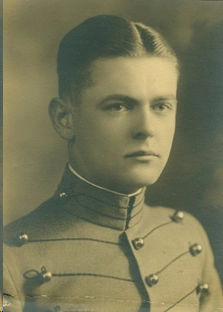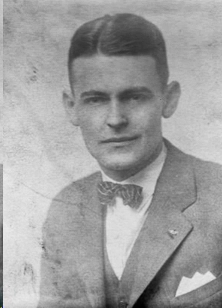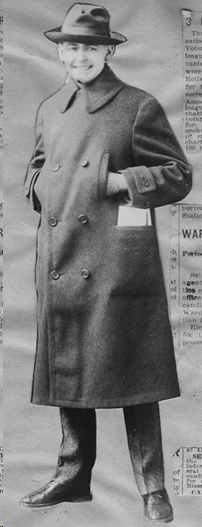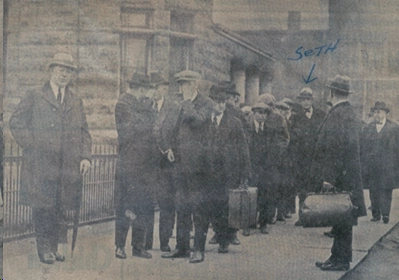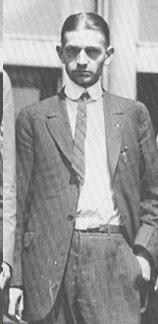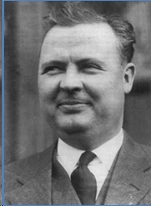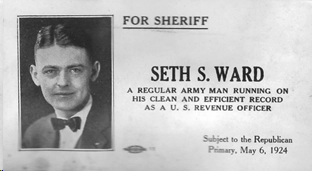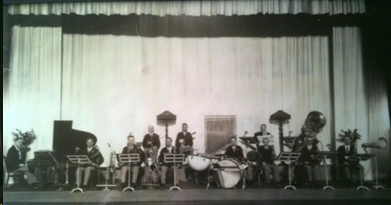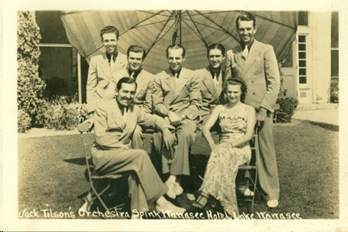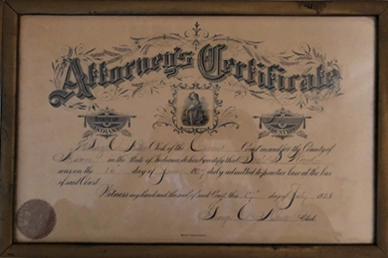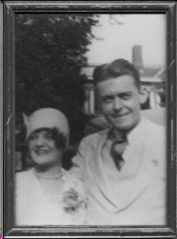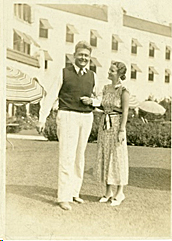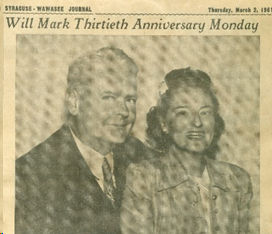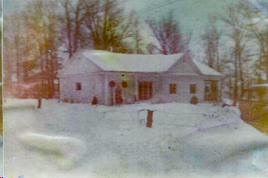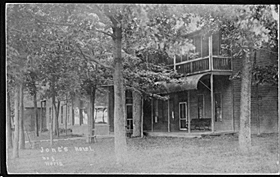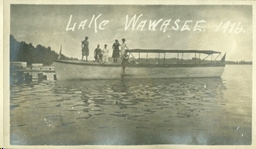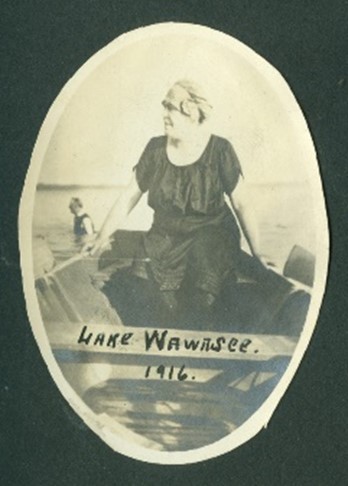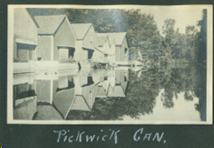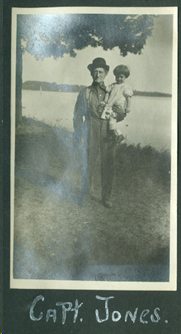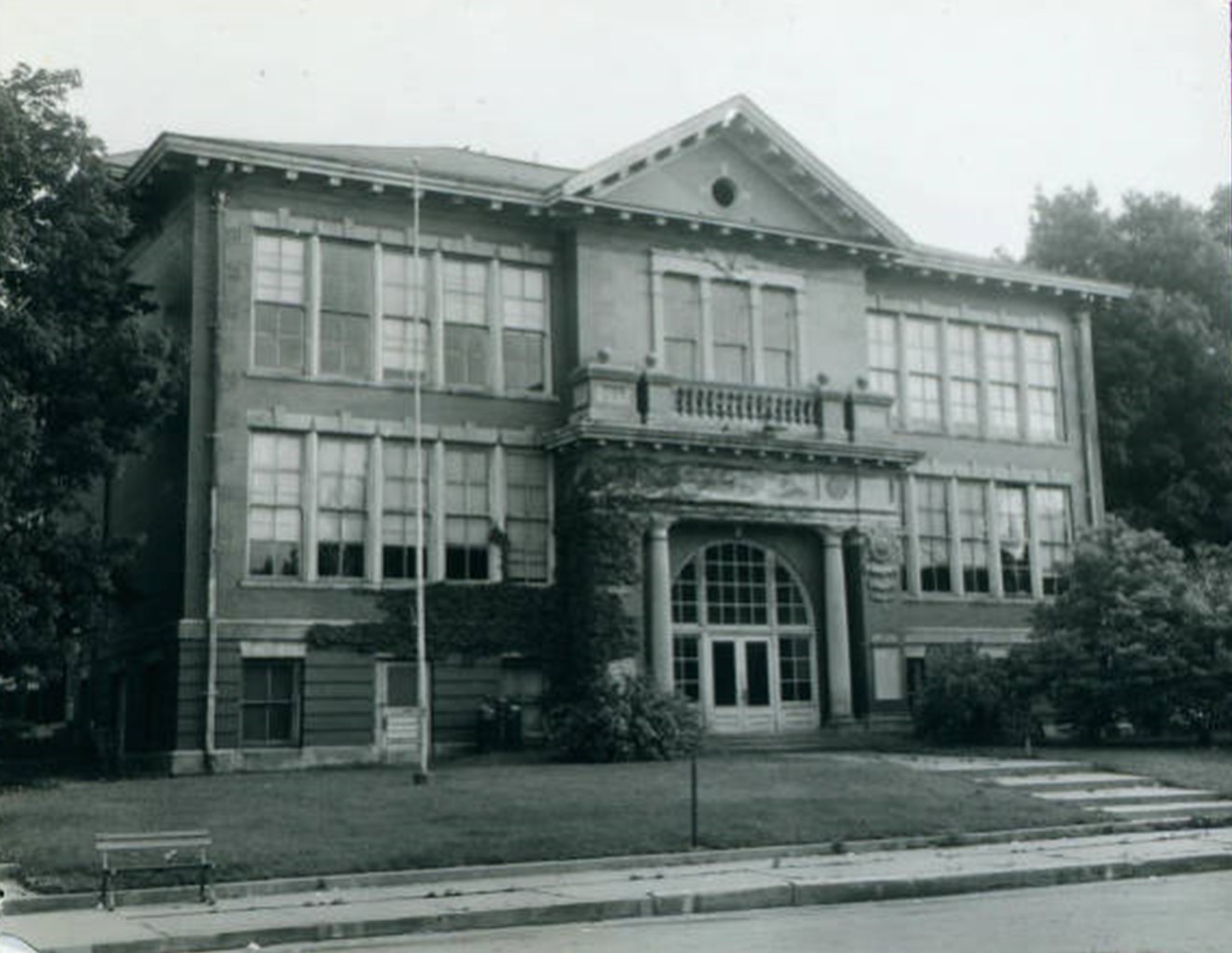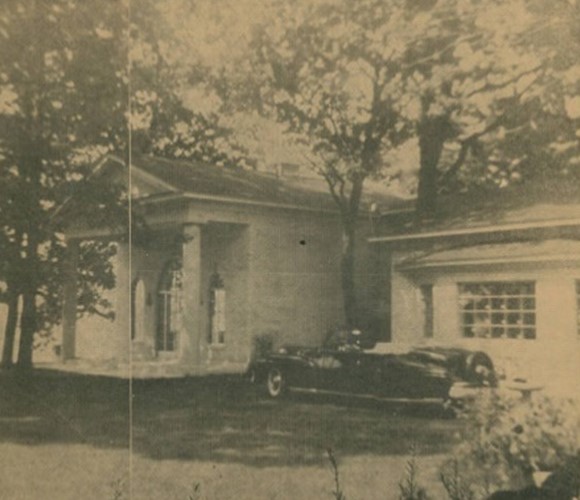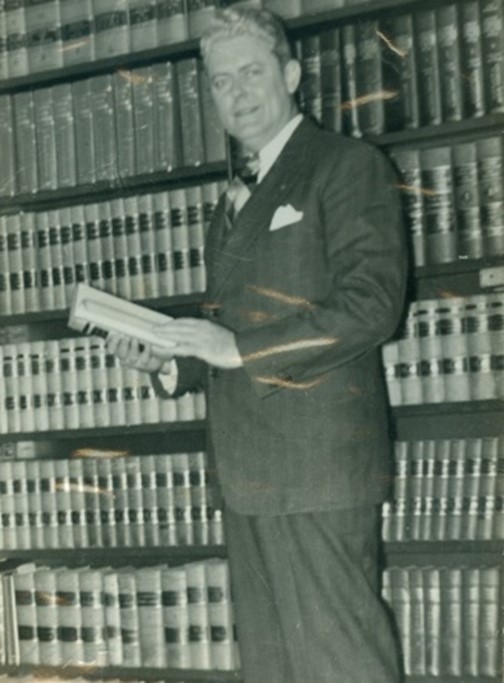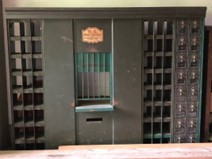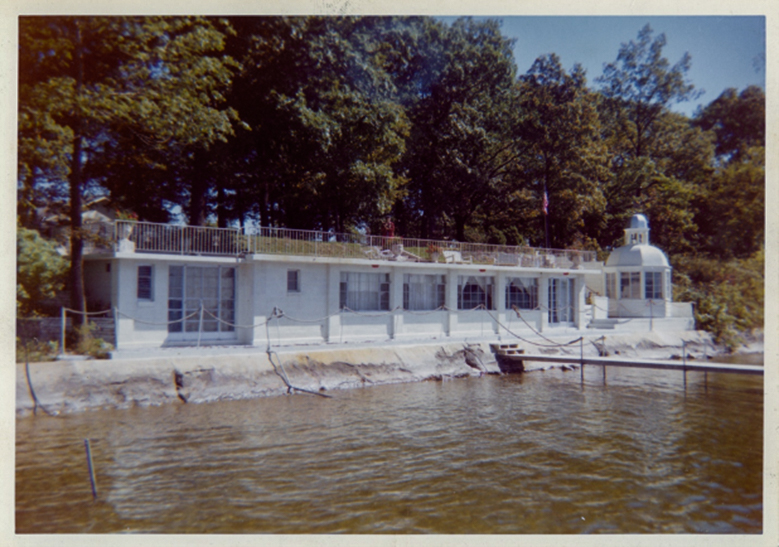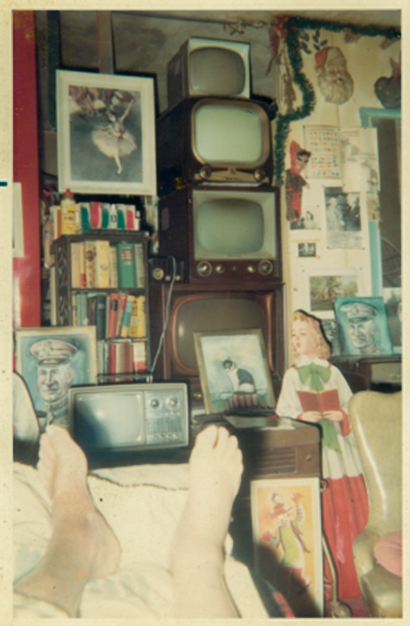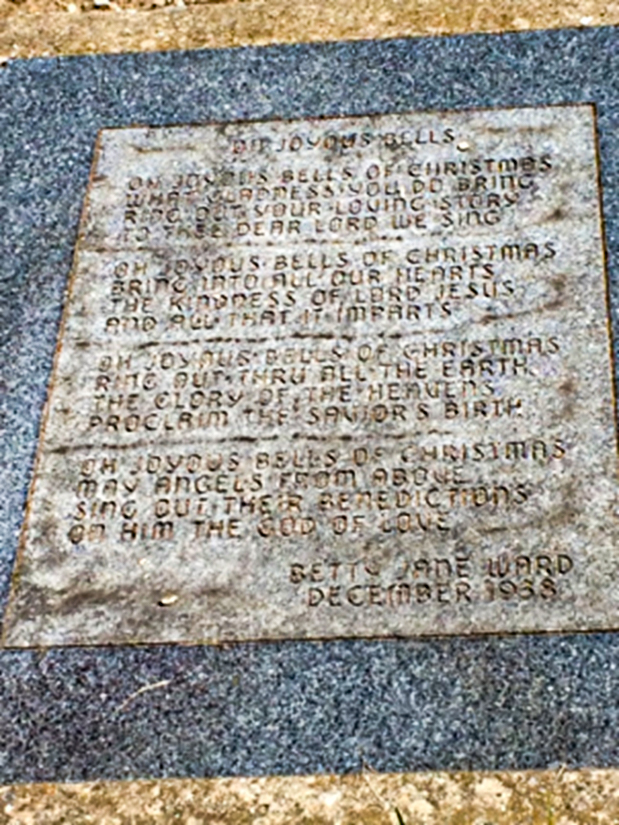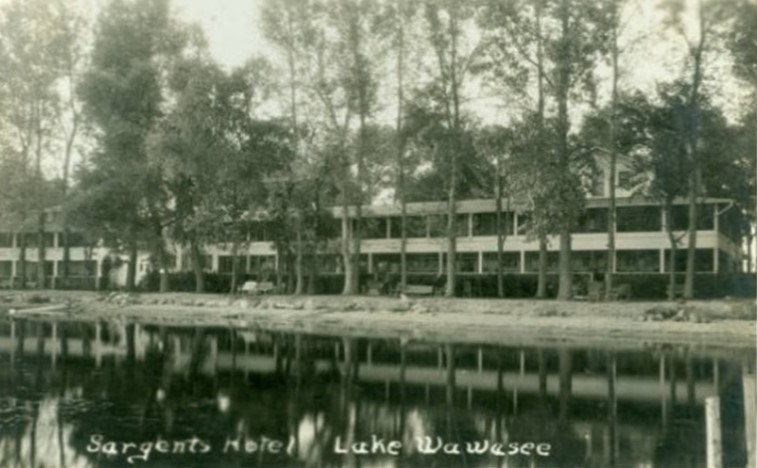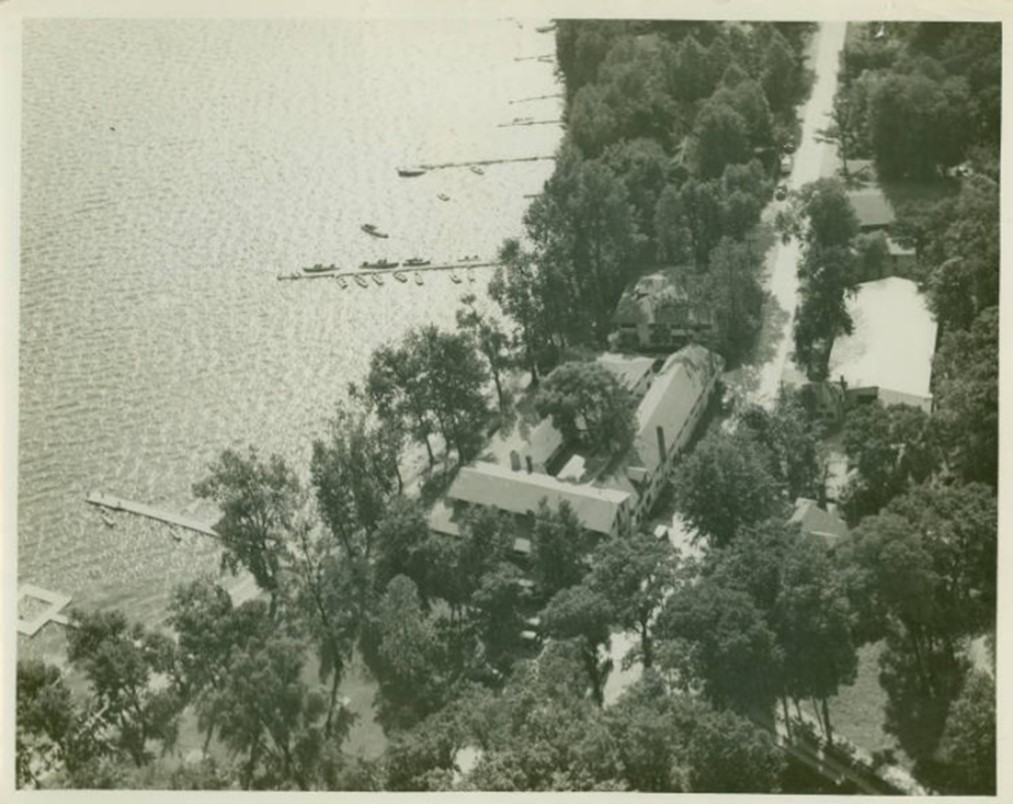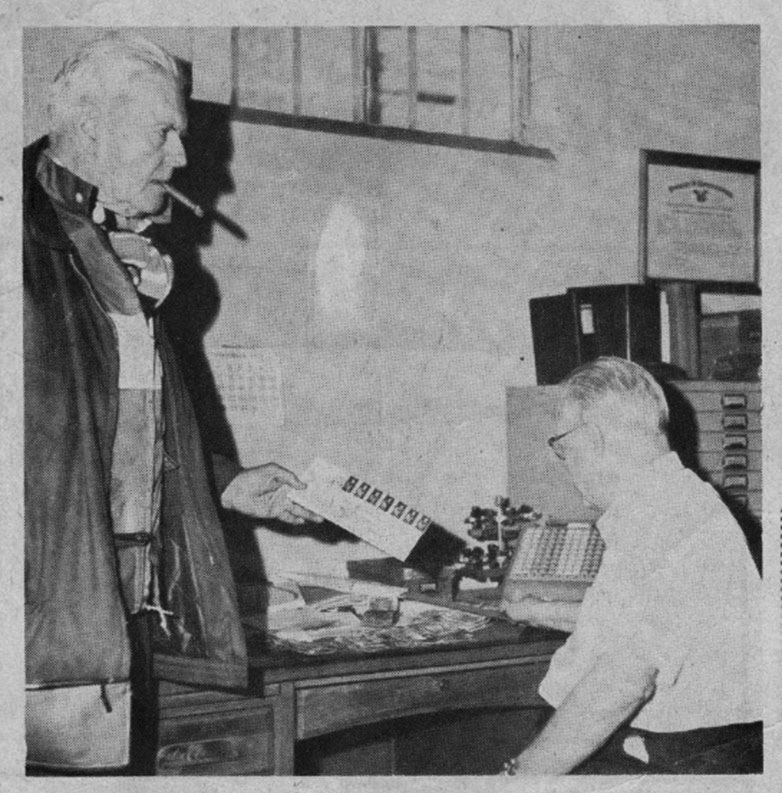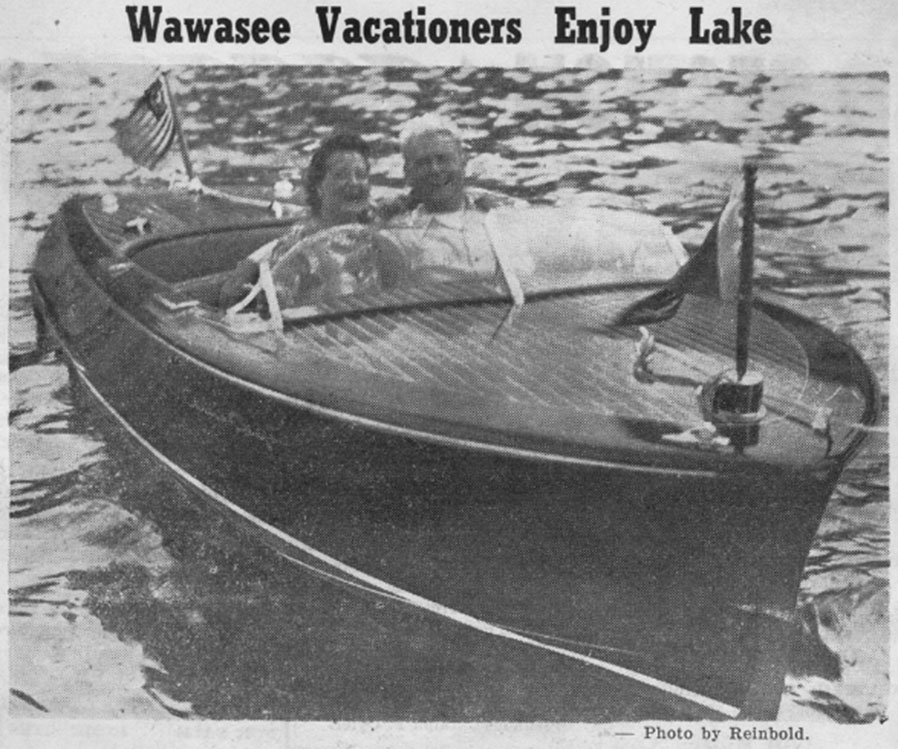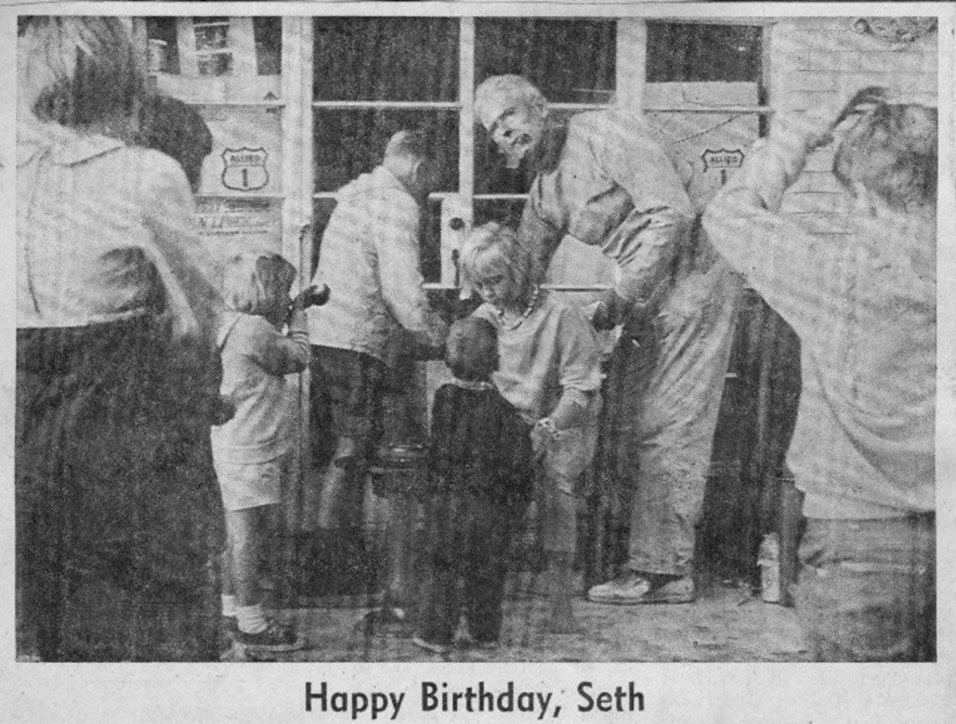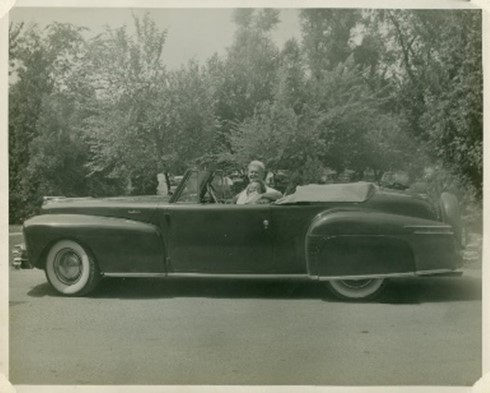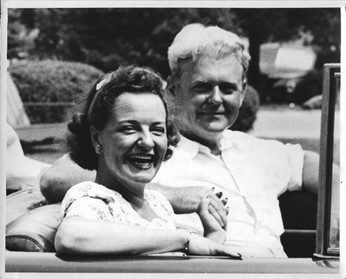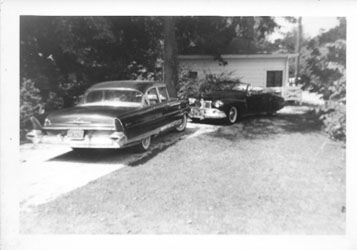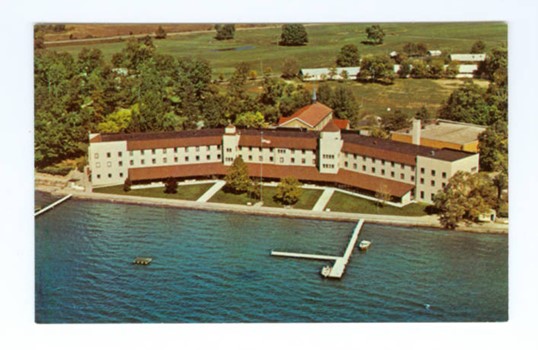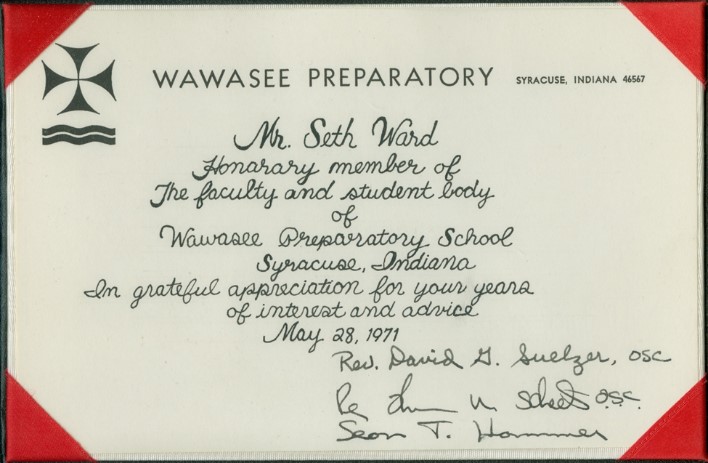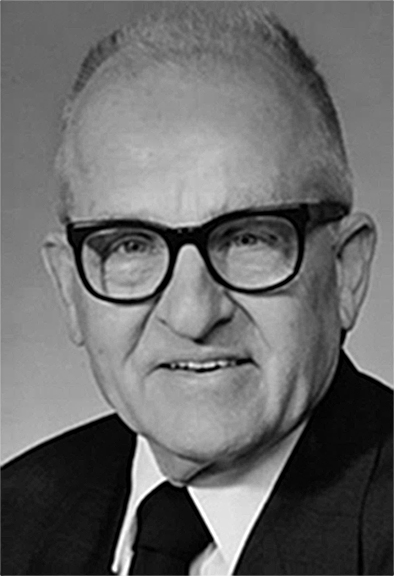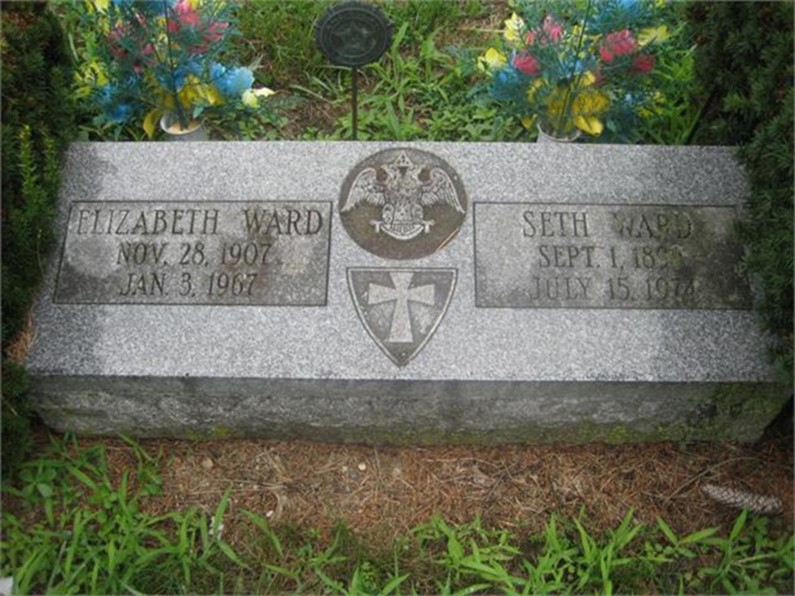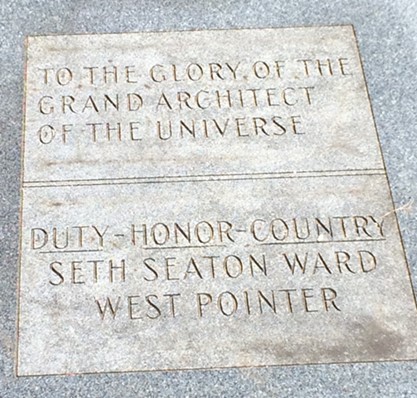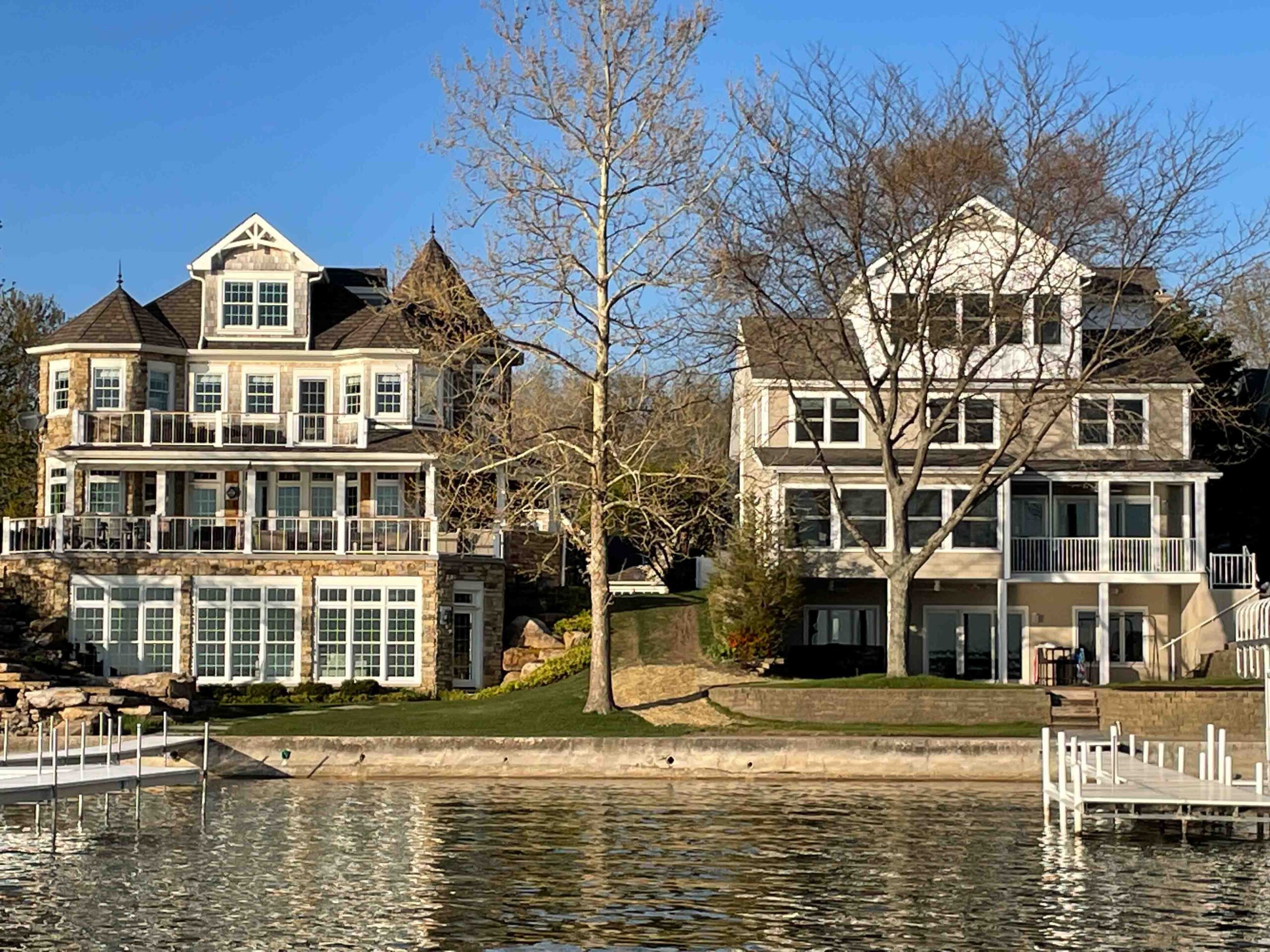Seth Ward
Everybody in the Lakes area knew of Seth Ward, but few actually knew him. Seth loved to see his name in print. Thanks to Harlan Steffen facilitating a recent donation to the Syracuse-Wawasee Historical Museum of Seth’s scrapbooks and photo albums preserved by Norma Baugher, his housekeeper in his last years, we’ve been able to construct much of his life. I’d also like to thank local residents and especially the Patrick family of Lake Wawasee and Indianapolis for sharing personal stories and supporting me in my quest for accurate facts. By the time we’re finished, I hope you’ll better know Seth and his wife Betsy, one of the Lake’s most elegant couples and also one of its most misunderstood.
The Early Years
Seth Seaton Ward, only son of Seth and Georgia Seaton Ward, was born in Princeton, Indiana, on September 1st, 1899. He must have moved to Indianapolis soon after third grade.
He graduated in 1917 from Shortridge High School in Indianapolis. According to the yearbook, he was in the senior class play, on the track team, tennis team and a member of the camera club.
Seth attended Purdue University from 1917 – 1918, where he was in ROTC and pledged Sigma Chi fraternity. Their March 1918 newsletter creates this word picture of Seth:
“Seth, although built on the lines of the Washington Monument, seems to acclimate himself very readily. Seth has landed a place on the Glee Club and takes an interest in student activities.”
(He also listed himself as a dash man and shot putter on the Purdue Track team.)
In 1918, R.O.T.C. Private Ward was at Camp Zachary Taylor, perhaps for summer camp. From 1917 – 1920, Camp Taylor, in Louisville, KY, trained soldiers for involvement in WWI. For a time, it was America’s largest military training camp.
The March, 1918 Purdue Sigma Chi newsletter revealed another future Lake Wawasee connection: “Brother Alldean Strieby, ‘18, was recently married to Miss Irene Macy.” Interestingly, Alldean’s father purchased the slip on Conklin Bay when the Portland Cement Co. abandoned operations. He set it up for his son to run a marina. The Wawasee Slip was technically the first marina on the lake, being established in 1921. Unfortunately, Alldean died 6 years later at age 31, and Irene’s brother, Wales Macy, ran it until his death in 1980. Irene Macy Strieby was a Purdue University librarian and eventually became the chief librarian and archivist for the Eli Lilly Company in Indianapolis.
A little more than 100 years ago, the world faced a pandemic. The 1918-19 Spanish Flu reportedly infected one third of the world’s population. The Spanish Flu occurred simultaneously with the end of World War I (armistice on November 11, 1918).
His credits as a Purdue student enabled Seth to enter West Point Military Academy in August, 1919, without examination. Gen. Douglas MacArthur was the Superintendent of West Point at the time. Seth received a medical discharge March, 1920, because of injuries received in the line of duty apparently as a result of a hazing conducted by upperclassmen who seemed to think it would improve the plebes’ discipline and character. He said he then found the pursuance of law more to his liking.
The Roaring 20’s and early 30’s
Civil Engineer
From 1920-1922, Seth worked for the city of Indianapolis as a draftsman in the civil engineering department. Seth was involved in politics as early as 1921 working on mayoral campaigns. In 1922, he was dismissed as transfer clerk for the city assessment bureaus and board of park commissioners because he backed a political candidate not to the mayor’s liking! This caused quite a stir among Republicans and Democrats alike.
Law Enforcement
During Prohibition (1920-33), the manufacture, sale, and transportation of alcohol was illegal in the United States. Seth was a Revenue Enforcement Officer for the U.S. Treasury from 1922 to 1925 (a T–Man; “think Elliott Ness & the Untouchables”). His highest profile arrest came with the Department of Justice in June, 1925, when he was part of a group who traveled to New York City posing as tourists and arrested officers of a wholesale mail order bootlegging business that had been shipping an estimated 500 cases of whiskey a month to Indiana.
In the 1920s, D.C. Stephenson was the extremely politically powerful Grand Dragon of the Ku Klux Klan of Indiana and 22 other states, operating out of Indianapolis. In 1923, at age 23, Seth is pictured outside the Marion County jail housing Stephenson after his arrest for the brutal assault of Madge Oberholtzer. Mr. Ward, a U.S. Treasury officer, aided in the apprehension of Stephenson by skillfully wire-tapping his telephone. On November 14, 1925, Stephenson was convicted and sentenced to life imprisonment, serving 31 years in the Indiana State Penitentiary, Michigan City. By 1928, the Indiana Klan, once the strongest in the Invisible Empire, had collapsed, with membership totaling only 4,000, down from an estimated high of half a million.
While in his early 30s, Marion County prosecuter, William H. Remy, successfully prosecuted the most powerful man in Indiana, KKK Grand Dragon D.C. Stephenson. Mr. Remy summered on Ogden Island at Lake Wawasee where he loved to fish from a rented Mock’s putt-putt boat. In 1940, his son, Charles Edwin Remy, married Mary Alice Phend; many may recognize Phend & Brown road construction company of Milford. Sadly, during WWII, in July of 1944 at age 28, Charles Remy was killed ten days after he led an infantry platoon to the front with General Patton’s 3rd Army. He is buried in Indianapolis’ Crown Hill Cemetery.
Politics
In the 1920s, cars were overtaking buggies and bicycles. From 1925-1927, Seth worked for State Auto Insurance ( acquired in 2022 by Liberty Mutual Insurance) as an Insurance Investigations Special Investigator. He ran for several political offices, but didn’t seem to get past the primary. Like the card says, he ran to become the 1924 Republican nominee for Marion County sheriff. Seth served as Republican chairman of the Third Ward in 1931 and 1932. In 1932, he was a primary candidate for the U.S. House of Representatives, and in the 1934 Republican Primary, he ran for Judge of the Marion County Superior Court.
There was another Wawasee connection in that 1932 primary. Jack Tilson, an IU law school graduate, was running for Marion County Court Judge. Tilson played with the Ross Reynold’s Orchestra in the 1920s.
Later, Jack Tilson led a dance band that performed at the Spink Hotel on Lake Wawasee!
Seth studied law as time allowed for 6 years before receiving his Attorney’s Certificate to practice law in the Circuit Court of Marion County, IN., dated June 16, 1927. On a federal job application, Seth wrote: “I received the highest grade in the class that took the State bar examination in 1926, at Indianapolis.” Consulting a local law office, I found he was listed in Indianapolis appellate court cases from 1930 – 1961. Seth was a Presbyterian, a member of the Columbia Club since c. 1925, and the American Legion
Family Life
On March 6, 1931, Seth Ward married Shortridge H.S. graduate Elizabeth May (Betty) Prunk, daughter of Dr. and Mrs. Byron Prunk of Indianapolis. They came to Wawasee the first year they were married, and in 1961, on their 30th wedding anniversary, they still had the key to the room which was always reserved for them at the Spink Wawasee Hotel. It had been presented to them by “Sir” Arthur Buckley, former manager, when the hotel was sold.
Lake Life
Ward and his wife Betty/Betsy (he affectionately called her “Junior”) moved to Lake Wawasee in the late 1950s (this picture was taken not too long after they moved here permanently)
About the same time they purchased a small “Honeymoon Cottage” located very near North Ogden Point Road, in Nordyke Park, several doors east of the Spink Hotel. The Wards soon earned a reputation as one of the lake’s most flamboyant couples.
Betsy painted this mural on one of the inside walls of the home.
These pictures in Seth’s parents’ photo album indicate the family may have visited Lake Wawasee as early as 1916. This is a mystery we would love to solve!
Around 1957, the old Syracuse grade school (now uptown lower parking lot) was being torn down, and Seth purchased the columns which he incorporated into the entrance of the grand white brick building on the property. To my knowledge, the whereabouts of the columns is unknown. Seth, a 32nd Degree Mason, placed a large Masonic emblem on the front step landing. Using a Bible Laura Sargent gave Seth, Rev. Koble of Syracuse performed a cornerstone laying ceremony. Viewed from the lake, most people mistakenly thought the grand white brick building was the Ward residence. Actually, the inside of the building was described to me as a large room much like a ballroom with a chandelier on the ceiling. The “library” contained a full-size picture of Abe Lincoln. Upon entering, Seth would greet Abe with, “Hello Abe, how’s business today?” Seth’s office in the smaller building was connected by a hallway lined with his law books. Interestingly, there is a Seth Ward, TX. Once Betty wrote to them requesting a postmark, but it was too small to have its own. The Wawasee Post office had their own postmark and these are the boxes from the old Sargent’s Hotel! All buildings on the property were demolished in the 1990s
Another Wawasee shoreline landmark on the property was the long white building with the “Independence Hall-style” belfry which housed an old locomotive bell Seth purchased in Brown County. With a terrace on top, it was primarily a bathhouse/guest house. The cement work on the property was done by Charles Rock and his son of the Syracuse area.
The Elkhart Truth described “Seth as a colorful person – a legend in this area. Seth was ruddy-skinned, weathered, and a patriot who believed in the American way. Every day, Seth raised flags on his poles. He’d get up in the morning and sing the Star Spangled Banner.” Seth once gave a talk to a Wawasee High School government class. Someone mentioned these televisions were on almost constantly, and he paid attention to what was being broadcast. He read all the time and kept up on new laws. You’ll notice his feet are propped up. In his later years, he suffered from phlebitis.
His wife Betsy must have been multi-talented – artistic, musical and poetically. At Christmas she created an original drawing of a Santa Claus’ head with a Christmas poem of her composing and evidently composed and lent musical assistance to the Indianapolis Monument Circle Christmas celebrations. This is the Christmas poem on her grave in the Syracuse Cemetery.
OH JOYOUS BELLS
OH JOYOUS BELLS OF CHRISTMAS
WHAT GLADNESS YOU DO BRING
RING OUT YOUR LOVING STORY
TO THEE DEAR LORD WE SING
OH JOYOUS BELLS OF CHRISTMAS
BRING INTO ALL OUR HEARTS
THE KINDNESS OF LORD JESUS
AND ALL THAT IT IMPARTS
OH JOYOUS BELLS OF CHRISTMAS
RING OUT THRU ALL THE EARTH
THE GLORY OF THE HEAVENS
PROCLAIM THE SAVIOR’S BIRTH
OH JOYOUS BELLS OF CHRISTMAS
MAY ANGELS FROM ABOVE
SING OUT THEIR BENEDICTIONS
ON HIM THE GOD OF LOVE
In 1957, Seth Ward negotiated the sale to Eli Lilly of the Sargent’s Hotel property adjoining the Lilly estate. 250’ of lake frontage, including the hotel, annex, convention hall and boat shed, sold for a reported $80,000
Typical of Seth Ward when he was in Syracuse:
- Winters saw him usually wearing a big, heavy coat
- Plenty of stamps to ensure prompt delivery of his Christmas mail
- Showed my Dad the commission check from the sale of the Sargent property pinned inside his coat
- Paying with “new money” – crisp bills or paying with $2.00 bills – “so he could see where his money went!”
- The Spink hotel had an English manager, Arthur Buckley, who wore a cut away coat and a bow tie. Seth believed the Queen of England knighted “Sir” Arthur – that very well be true!
Back when few people had boathouses, Seth’s Chris Craft was primarily kept at Macy’s Slip on an “in and out” basis – owners would alert the marina as the weekend approached that they would like to use their boat and to have it ready; on Sunday evening, owners would return the boat to the marina where it would be lifted out of the water and put on a cradle, leaving a little water in the bottom so it wouldn’t dry out, to store until further use.
Scores of neighborhood children and friends annually attended HIS birthday parties on Sept. 1st. Seth provided a number of cakes, gallons of ice cream and endless candy bars and cookies. In 1969, several hundred kids helped him celebrate his 70th birthday.
Seth and Betsy drove Lincolns. One of these cars became legendary – he repainted it himself, using numerous cans of aluminum spray paint, put a slow-moving vehicle orange triangle on the trunk lid and had plastic pumpkins/jack-o-lanterns on each rear tail light at Halloween.
The Spink Wawasee Hotel closed its doors at the end of the 1947 season. From 1948 until 1965, the property was the site of Our Lady of the Lake Seminary operated by Crosier Order priests.
From 1967 – 1975, the priests operated Wawasee Preparatory School – a private, boys boarding high school program and 2 years of college. Seth Ward lived nearby and considered the priests his friends. He allowed Wawasee Prep the use of a portion of his property across the road as a soccer field for a short period of time.
At 67, Seth returned to Indianapolis to try his first court case in 10 years. He teamed up with William B. Patrick in behalf of the plaintiff in a personal injury suit. Seth had worked on cases with Bill’s father, Fae Patrick, a labor lawyer in Indianapolis, and I imagine watched Bill grow up. The Patrick family has been on Wawasee since 1936. I first got to know Bill, another Shortridge graduate (and Yale too) when he was a young man enjoying the lake to its fullest!! Bill and the family would visit Seth & Betsy frequently when they were taking a boat ride.
His beloved Betsy died in Jan., 1967 and is buried in the Syracuse Cemetery. Seth had wanted to bury Betsy in her family’s plot at Crown Hill in Indianapolis, but after some time found that wouldn’t work out. Seth lived another seven and a half years at his Wawasee home, dying in July, 1974. Notice what is engraved on his marker in the Syracuse Cemetery: “To the glory of the grand architect of the universe. Duty. Honor. Country. Seth Seaton Ward. West Pointer.” Symbols on the monument are: a Sigma Chi shield and Masonic symbol.
After Seth Ward’s Death
Sometime after the Ward’s death, a realtor purchased the property, tore down the structures, and divided it into two lots (#11A & 11B), building a spec house which the buyer finished to his liking and a family built a house on the second lot. A devastating fire in late March of 1998 destroyed both homes and an adjacent home. M-J 6, 2000 reported: “This devastating fire prompted hydrants in the waters of Lake Wawasee. 15 hydrants will be completed by August.”
Conclusion:
It’s been my pleasure to sort out the life of Legendary Seth Seaton Ward – Grand Old Man of Lake Wawasee during the 1950s through the ‘70s using information contributed by Seth himself in 1932 and 1942 on questionnaires. His life was a blend of humor, sorrow and controversy. When it came right down to it, Seth was a sensible man. He believed in God, was soft-hearted, tender, protected Betsy, loved to have visitors, didn’t hold anything back; he was ornery, BUT he could be a perfect gentleman when it was appropriate. Everyone had a favorite Seth Ward story. It was an education to talk to him or for that matter listen to him from across the store. “No matter how dull your day might start out to be, meeting Seth and talking for a few minutes could make you forget your troubles.”
Written by Ann Vanderford Garceau for the Syracuse-Wawasee Historical Museum based on historical research. It is not to be used without permission from the museum.
